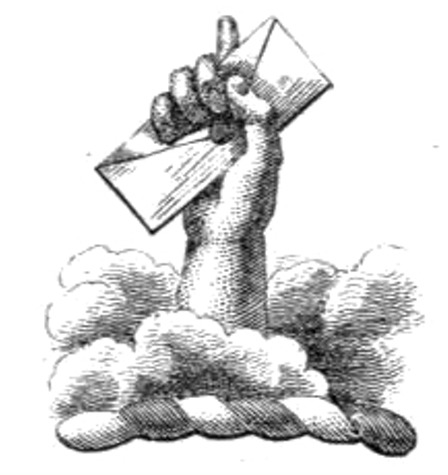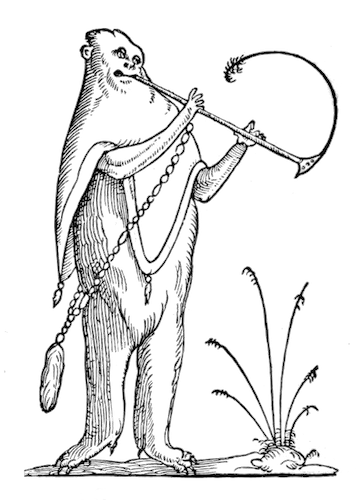
The Old, Old, Very Old Man Thomas Parr and the Longevity Trade
As the story goes, Old Tom Parr was relatively healthy for being 152 until a visit to noxious, polluted London in 1635 cut his long life short. Katherine Harvey investigates the early modern claims surrounding this supercentarian and the fraudulent longevity business that became his namesake in the 19th century.
May 21, 2025
Undated oil painting of Thomas Parr, by an unknown artist after a work of 1635 — Source.
In the autumn of 1635, a man arrived in London. In itself, this was not an unusual event: London was a thriving metropolis, and the seventeenth century was a time of rapid urban growth. People from across the country (and world) arrived in the capital every day. But Thomas Parr was no ordinary man. He had recently celebrated his 152nd birthday.
According to poet John Taylor’s 1635 verse biography of The Old, Old, Very Old Man, Parr was raised in the Shropshire village of Winnington. Born in 1483, the son of a tenant farmer, he worked as a servant until he inherited his father’s role in his mid-thirties. Something of a late developer in his personal life, he married for the first time at 80, and for the second at 122; he also did public penance at 105, when he “frailly, foully, fell into a Crime / Which richer, poorer, older men, and younger” were prone: he committed adultery.1
Parr was, by all accounts, a hard worker well into his second century, but by 1635 he was beginning to show his age. He could walk with support, and still liked to “speak heartily, laugh and be merry”, but he was also blind, very wrinkled, and had only one tooth.2 Had the Earl of Arundel not decided to pay a visit to his Shropshire estates that summer, Parr would surely have died in rural obscurity. But Thomas Howard was an enthusiastic collector of antiquities, and when he heard of the existence of a 152-year-old man, the earl decided that this marvel must be taken to London. A litter was provided, and crowds turned out to catch a glimpse of this remarkable being on his journey. On arrival in the capital, Parr lived at the earl’s house on the Strand, and was presented to King Charles I and Queen Henrietta Maria at Greenwich. But his stay ended abruptly in mid-November, when he fell ill and died. Parr was buried in Westminster Abbey shortly afterward, under a simple stone which noted that he had witnessed the reigns of ten monarchs.
From a twenty-first century perspective, our instinctive reaction to Old Parr’s story is doubt. Some of his contemporaries seem to have shared our cynicism about such tales of extreme longevity; the historian Thomas Fuller, for example, once complained that many old men “set the clock of their age too fast when once past seventy”.3 But most seem to have simply accepted Parr’s story, just as they believed the similar claims made for Katherine Fitzgerald, countess of Desmond (1464–1604), and the Yorkshire fisherman Henry Jenkins (1501–1670). Widespread belief in Biblical tales of extreme longevity — which were widely taken as proof that it was possible for humans to live for several centuries, even if no one had done so since the Flood — helped make tales such as Parr’s seem plausible.
Such credulity was also aided by the lack of documentation for ordinary lives. Other than the literary accounts, the only surviving record of Parr’s existence is a 1588 deed granting him and his wife Jane a lifetime lease on their Shropshire tenement. (A document which, Taylor claims, was obtained through trickery: Parr feared that his lease, already thrice-renewed because of his longevity, would not be further extended due to his blindness, so he had his wife place a pin on the floor. When the landlord arrived, Parr immediately spotted it, leaving his landlord “half in a maze that the Old Man had recovered his sight again.”)4
Consequently, instead of trying to prove or disprove Parr’s date of birth, contemporary accounts focused on answering two questions: why did Parr live so long, and why did he die so suddenly? The answers to these questions reflect the early modern preoccupation with healthy living, and in particular the belief that a set of factors known as “the six non-naturals” (namely air and environment, food and drink, exercise, sleep, excretion, and the emotions) had a significant effect on an individual’s health. According to both John Taylor and the royal physician William Harvey (who is now best known for discovering the circulation of the blood, but who also served as physician to both James I and Charles I), Parr’s longevity was largely attributable to the clean, pleasant surroundings in which he dwelt, and to his simple country ways.5 Throughout his long life, he had worked hard, eaten a wholesome diet of brown bread, unripened cheese, and onions, avoided strong alcohol and worry, and slept well.
And then, as Harvey explained in his autopsy report, Parr’s visit to London forced “the sudden adoption of a mode of living unnatural to him”. His usual fare was abruptly replaced by a “generous, rich and varied diet” which, in combination with strong drink, “ruined the functions of almost all his natural parts”.6 Such a diet was, contemporary medical theory suggested, unhealthy for anyone; indeed, by the seventeenth century there was a growing conviction that the peasant diet (which consisted mostly of vegetables and dairy produce) was far healthier than the expensive meats and wines favoured by the wealthy. But fine foods were particularly unsuitable for a poor man like Parr, whose peasant digestion was designed to process the coarser fare which was his divinely ordained lot.7
Oil painting of William Harvey dissecting the body of Thomas Parr, ca. 1900 — Source.
As an “enfeebled old man” more accustomed to the pure and temperate air of rural Shropshire, Parr was also extremely vulnerable to the air pollution that plagued early modern London.8 Harvey explained that the city was “full of the filth of men, animals, canals and other forms of dirt”, which combined with the “not inconsiderable grime” produced by the constant burning of coal to produce unhealthily “heavy” air — which was at its most unpleasant in the autumn.9 The diarist John Evelyn, whose 1661 treatise Fumifugium focused on London’s growing pollution problem, had no doubt that Parr’s death was caused by “the Aer, which plainly wither’d him”.10 The Old, Old, Very Old Man was — it seemed clear to his contemporaries — the embodiment of a better way of life, at least until he succumbed to the temptations and excesses of London. And thus his story was best understood as a cautionary tale about the dangers of modernity.
***
The end of Parr’s long life marked the beginning of his even longer afterlife, and in the four centuries since his death, the story of this remarkably old man has continued to evolve. Taylor’s biography remained in circulation throughout the eighteenth century, and images of this inspiring figure were also popular. In some, he was surrounded by a large family — and, although none of his offspring survived infancy, several eighteenth-century centenarians were identified as his descendants. In the 1790s, he was the subject of a Cheap Repository Tract, distributed to the literate poor for their moral education, in which Parr, who has long been resentful of his poverty, dies of overindulgence in London, acknowledging only on his deathbed that “God knows what is best for man”.11 Even in early Victorian England, Parr was still a sufficiently well-known figure to be evoked in popular novels such as The Old Curiosity Shop (in which Dickens describes a long-lived equine as “the very Old Parr of ponies”) and portrayed in a play staged at London’s Haymarket Theatre.12
And then, in 1841, Parr’s story was given a new lease of life, thanks to an enterprising Nottingham newsagent named Herbert Ingram (1811–1860). A man of relatively humble origins, Ingram first entered the patent medicine industry as an agent for Morrison’s Vegetable Pills. When he fell out with Morrison, he decided to create a remedy of his own, and commissioned a local medical man to come up with a harmless recipe. Soon, he began to sell this preparation as Parr’s Life Pills — tiny tablets which could, he claimed, cure virtually any ailment. If taken regularly, they would also prevent illness and promote longevity.
1830s print after George Cruikshank titled “The Sick Goose and the Council of Health”, depicting various remedies and health fraudsters suggesting treatments. Old Parr says: “Parr’s Life Pills I see are the only things that can save him”. Morrison’s Vegetable Pills, where Herbert Ingram got his start in the patent medicine business, replies: “Life pills! Vegetable pills you mean, let him be well stuffed with Morison's no. 1 & 2” — Source.
Patent medicines (that is, pre-packaged remedies sold without a prescription, and prepared according to a recipe known only to the proprietor) were big business in early Victorian England, aided by a lack of medical regulation which meant that anyone could invent and patent drugs. In this increasingly crowded market, Parr’s Life Pills stood out because of the story Ingram concocted to explain their origins — a story made available to the masses in a widely-circulated pamphlet called The Extraordinary Life and Times of Thomas Parr.
This heavily embroidered biography was supposedly prompted by the rediscovery of Parr’s will, containing the recipe for a medical preparation to which he credited his longevity. This remarkable remedy was, Ingram claimed, devised by Parr himself after he was struck down by both the bloody flux and the King’s Evil. Living in an age of superstition, he decided to consult “one of those grim old ladies who were popularly believed to ride astride broomsticks”, but her remedies only made him worse, and Parr feared that he would die.13 But, thanks to his countryside wanderings, he had acquired a detailed knowledge of herbs which he now realised could help him. Eventually, after many careful trials, he discovered a simple recipe which proved so effective that he was not merely cured, but became celebrated “for great strength, activity and vigour”.14
 Scroll through the whole page to download all images before printing.
Scroll through the whole page to download all images before printing.Cover page of the fifty-first edition of The Extraordinary Life and Times of Thomas Parr, a pamphlet intended to market Parr’s Life Pills, ca. 1890 — Source.
 Scroll through the whole page to download all images before printing.
Scroll through the whole page to download all images before printing.Pen drawing credited to “Matthews” of Old Parr mixing his longevity pill formula, ca. 1861 — Source.
According to Ingram, Parr kept his discovery a secret — knowing that, if it was revealed, “he would probably have been dubbed a wizard, and introduced to the nearest horsepond for his pains.”15 But, in his will, he bequeathed the recipe to his “second great grandson” — a legacy which meant that many of Parr’s immediate descendants lived to well over one hundred, proving that “his WONDERFUL MEDICINE (combined with a careful and moderate mode of life) is the MEANS by which a long and healthy life may be secured”.16 Further evidence of the medicine’s rejuvenating effects was provided by the experience of another seventeenth-century centenarian, Henry Jenkins, who was “a feeble, tottering old man” until Parr “supplied him with his life-giving pills” — after which he returned to work as a fisherman, and lived to be 169.17
The pamphlet, which was first issued in 1841 and frequently reprinted into the early years of the twentieth century, was only one part of a massive campaign to promote the new product.18 Adverts appeared in newspapers and periodicals not just across the UK but globally, many of them including testimonials from satisfied customers such as Joshua Ball, who had been bedbound with rheumatic gout for seventeen years before being restored to health by this new remedy. Soon, the company was selling tens of thousands of boxes of pills every week, and making so much money that Ingram was able to move to London. There, he set up the Illustrated London News, became an MP, and strenuously distanced himself from the business which had made his fortune — apparently feeling that acknowledging his involvement in such a disreputable industry would undermine his growing respectability.
Indeed, despite the popularity of the pills, not everyone was convinced of their powers. Throughout the nineteenth century, magazines such as Household Words ran articles that satirised both the product and its makers; one Punch sketch went so far as to suggest “throwing of 12,000,000 boxes of PARR’S Life Pills into the sea, for the benefit of the fishes and the good of the public who might otherwise get hold of the medicine”.19 Others printed mock testimonials that contained claims even more exaggerated than those found in the real adverts (which were surely, it was suggested, the work of anonymous scribblers rather than genuine customers): one particularly outrageous example concerned a man who had supposedly survived falling into the crater of Vesuvius and being blown up at Waterloo thanks to these tiny tablets.
Illustration from an 1845 issue of Punch accompanying a testimonial by one Mr. Hackett, expounding the benefits of Parr’s Life Pills — Source.
But not everyone could see the humour in the situation. In The Condition of the Working Class in England, Frederick Engels viewed patent medicines as a major threat to the health of the working classes, who, unable to afford doctors, instead relied on quack remedies such as Parr’s Life Pills to prevent and treat all manner of ailments. Although he conceded that they rarely contained harmful substances, Engels argued that “when taken freely and often, [these preparations] affect the system prejudicially”, and contributed to “a general enfeeblement of the frame in the working classes”.20 Four decades later, The Spectator expressed similar concerns: many ignorant people were so overdependent on “much-puffed medicines” such as Parr’s Life Pills that they failed to get proper medical assistance until it was too late.21
Others openly criticised the company for its fraudulent approach to business. In his 1893 memoir, the publisher and journalist Henry Vizetelly claimed that Herbert Ingram’s fortune came from “a vulgar fraud on an ignorant public”.22 Vizetelly was, perhaps, not an unbiased source; though he worked with Ingram for nearly two decades, he seems to have disliked the man. But he was far from alone in his scepticism. Four decades earlier, The Medical Circular had published an investigation into Parr’s Life Pills as part of a series on “The Anatomy of Quackery”, concluding that their inventors had made a princely fortune from “the gullibility of simpletons”, and that their version of the Old Parr story was “a tissue of absurdities and falsehoods from beginning to end”.23
Somewhat surprisingly, given its reputation for cynicism, The Medical Circular did not go so far as to challenge Parr’s longevity; indeed, it suggested that both he and Jenkins owed their long lives to “naturally strong constitution and surrounding circumstances”.24 Nevertheless, in an age which placed increasing value on both science and accurate recordkeeping, doubts were growing. In his influential 1873 book Human Longevity: Its Facts and Its Fictions, the antiquarian William J. Thoms argued for a more rigorous approach to the study of longevity, and debunked the claims of many famous supercentenarians. Although he accepted that Parr was a very old man — quite probably a little over one hundred — he found it impossible to substantiate even the basic facts of his life as outlined by Taylor, and also pointed out that (despite a growing number of stories about Parr’s long-lived descendants) he died without offspring.
On the basis of Thoms’ rigorous analysis, it was hard to disagree with his conclusion that the whole story was no more than “a monstrous fable” — and, as the lustre faded from the Old Parr story, the pills which bore his name also declined in popularity.25 Nevertheless, more than a century after Parr’s Life Pills ceased production, and nearly four centuries after their namesake died, the lure of longevity remains strong. As modern charlatans promote increasingly outlandish ways to prolong life, the story of Parr’s Life Pills (which came to be seen as a threat to, rather than a guarantor of, health) provides a salutary warning to the gullible. Or, as one anonymous nineteenth-century Salopian put it: “I never heard that Old Parr was such an idiot as to swallow pills to preserve his health; and if anyone of the present generation who does swallow such stuff should live to be half the age of Old Parr, it will be a greater miracle than anything in Parr.”26
Katherine Harvey is a UK-based historian, writer and reviewer, specialising in medieval history. She holds a BA, MA, and PhD in History from King’s College London, is an Honorary Research Fellow at Birkbeck, University of London, and teaches for both Birkbeck and the Open University. She has published widely in both academic journals and popular periodicals, including BBC History Magazine, History Today, Aeon and The Atlantic. She reviews regularly for publications including the The Sunday Times and The Times Literary Supplement. Her most recent book, The Fires of Lust: Sex in the Middle Ages, was published by Reaktion in October 2021. She is at work on a book about healthy living in the Middle Ages.
Enjoyed this piece? We need your help to keep publishing.
The PDR is a non-profit project kept alive by reader donations – no ads, no paywalls, just the generosity of our community. It’s a really exciting model, but we need your help to keep it thriving. Visit our support page to become a Friend and receive our themed postcard packs. Or give a one-off donation. Already a supporter? A huge thank you for making all this possible.



-edit.jpg?width=1200&height=850)










